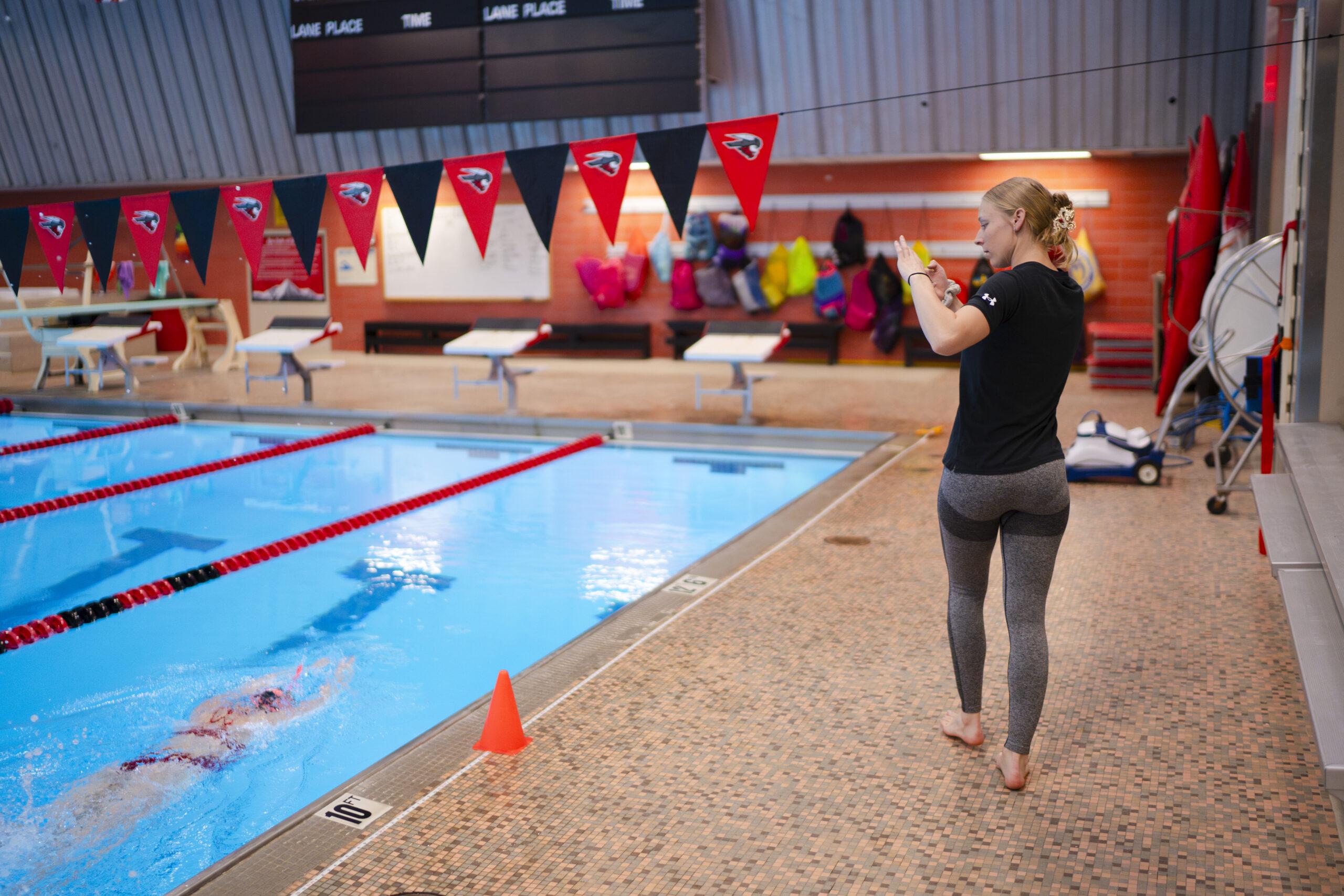A University swimming pool isn’t where you’d typically look for a student working with state-of-the-art electronics. But that’s exactly where you’ll find Emily Jauch doing a lot of her research, using specialized sensors from Western’s Neuromechanics Lab to study the science of movement.

For Emily, a master’s student in the Clinical Exercise Science 3+2 track, the Lab’s equipment has allowed her to see tiny movements in swimmers that would otherwise be invisible to the naked eye. The equipment has also become a proving ground for her research into how swimmers can avoid overuse injuries by using better swimming techniques, as well as an opportunity to carve a unique path into a career in physical therapy.
Through the accelerated degree program, Emily, a student-athlete on Western’s swim team, graduated with a bachelor’s degree in May 2024 and is on track to receive a master’s degree in May 2025. “So, this was kind of a cool opportunity to get ahead and get a little bit more hands-on physical research experience,” she said, “before I go on to PT school.”
Now, her research focuses on the effects of a specialized rehabilitation program on functional stability in female swimmers, a group known to suffer from overuse injuries. Using cutting-edge technology available in the Neuromechanics Lab, she’s been able to analyze movement in a way no one else has. The work led Emily to an opportunity to collaborate with Movement Health Sciences, a company whose mission is to “discover and fix invisible vulnerabilities in athletes.”
New Tools Enable Innovation
When the Neuromechanics Lab first opened in the Rady School of Computer Science and Engineering in Spring 2024, program co-director Kevin Terry hoped to invite physical therapists and athletic trainers into the lab. There, patients and athletes could be connected to sensors that collect muscle activation, acceleration, and gyroscopic information from an advanced motion capture system that turns the tiniest movements into data.

Neuromechanics is the study of how the nervous system and the musculoskeletal system interact to allow body movement. Soon, the lab will be an essential component of the biomedical engineering major the Partnership Program plans to start offering in Fall 2025. But there are plenty of applications for the lab right now.
For Emily, the lab’s tools provide unique opportunities, like adapting Inertial Measurement Units (IMUs) – similar to those that tell your phone which way is up – to work underwater to measure spinal rotation and other subtle movements in swimmers. “Swimming is unique because it removes gravity and operates on a horizontal plane,” Emily said. “There’s no existing literature on how to define IMU data the way we are. It’s new territory, and that’s exciting.”
While the Neuromechanics Lab has been great for Emily’s research, her motivations for taking it on are also personal. As a student-athlete who’s faced her share of overuse injuries, she cares deeply about finding answers for the next generation of swimmers.
“Athletes are professional compensators. We learn to adapt to injuries, but those compensations often cause long-term harm,” she said. “I want to develop strategies that allow athletes to have longer, healthier careers.”
Watch the interview with Emily on KKCO 11 News.
Learn more about the programs
Author Credit: Seth Mensing
Photo Credit: Olivia Reinhardt


